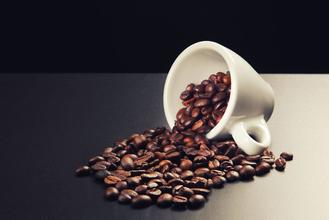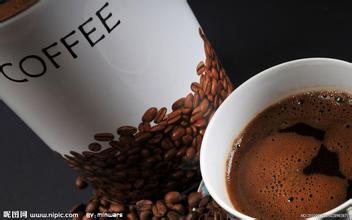Introduction to the characteristics of palatability treatment methods of smooth and fragrant Hawaiian Coffee
The Hawaiian islands are formed by volcanic eruptions, including 8 large islands and 124 small islands, stretching for 2450 kilometers, forming a crescent-shaped island chain. Hawaii is the largest island, with two active volcanoes. The climate is mild and pleasant all the year round, the precipitation is greatly affected by the topography, there are great differences in different places, and the forest coverage rate is nearly 50%. The state is made up of 19 major islands and coral reefs, located in the central Pacific Ocean. According to the Bank of Hawaii, the ripple effect of tourists' spending in Hawaii is 2, that is, for every US $1 spent by tourists, it will increase the local total output value by US $2. Tourism income accounts for 60% of the local gross domestic product, making Hawaii's economic growth rate always higher than the average economic growth level of the United States. As tourism plays an important role in Hawaii's economy, the Hawaiian state government attaches great importance to protecting the environment, protecting tourism resources, and paying attention to the development of "clean" industries, such as marine science, aquaculture, tropical agriculture, financial services, commercial centers, etc. In order to promote the development of tourism, and promote economic development.
Although Hawaii is often affected by tornadoes, the climatic conditions are very suitable for the coffee industry. There is plenty of rain and sunshine, and there is no worry of frost. In addition, there is a strange natural phenomenon called "free shade". On most days, around 2 o'clock in the afternoon, white clouds appear in the sky, providing the necessary shade for the coffee trees. In fact, it is such superior natural conditions that make Arabica coffee in the Kona region produce more coffee than any other plantation in the world, and always maintain high quality, unique growth and climate environment to create a stronger coffee flavor. For example, 560 kilograms of coffee per hectare are produced in Latin America and 2240 kilograms per hectare in Kona.
But to the regret of coffee fans, only about 1400 hectares of coffee is produced. And because of Hawaii's high income and a large number of tourists, Kona coffee is so expensive that it is even sold as "konablend" (no more than 5 per cent of Kona beans). In recent years, neighboring islands such as maui, kauai and molokai have also begun to grow coffee commercially. Kona coffee beans from Hawaii have the most perfect appearance, and their country is extremely full and shiny, making them the most beautiful coffee beans in the world. The coffee is smooth and fragrant, with an attractive nutty flavor and a well-balanced acidity, as charming as the colorful colors of the island of Hawaii and a long finish.
The world-famous "Kona of Hawaii" is a mellow and sour coffee bean.
Kona coffee is grown on the slopes of Mauna Roa volcano on the southwest coast of Hawaii. In terms of flavor, Kona coffee beans are closer to Central American coffee than Indonesian coffee. Its average quality is very high, carefully handled, medium texture, good sour taste, very rich flavor, and fresh Kona coffee is extremely fragrant. If you think your coffee is too thick, African coffee is too sour, Central and South American coffee is too rough, then "Kona" may be very suitable for you. Kona is like a girl in the Hawaiian sunshine breeze, fresh and natural.
Kona coffee beans from Hawaii have the perfect appearance. Their fruit is extraordinarily full and shiny. The taste of coffee is rich and aromatic, with cinnamon flavor, and the acidity is well balanced. Hawaiian coffee is the only top variety produced in 50 states in the United States, and the United States is naturally its largest market. Its taste is strong sour and mellow, with tropical flavor. This kind of coffee is a little bitter and not suitable for young people. The main raw material of Hawaiian coffee is Kona Coffee, which has a strong Hawaiian flavor, has a fine tradition and high quality, and has an extraordinary effect in its use and processing. This kind of coffee is the real Hawaiian coffee.

Important Notice :
前街咖啡 FrontStreet Coffee has moved to new addredd:
FrontStreet Coffee Address: 315,Donghua East Road,GuangZhou
Tel:020 38364473
- Prev

Introduction to the treatment methods for the characteristics of the grinding degree of Colombian coffee
After the news of Napoleon I's invasion of Spain in 1808 spread to Colombia, the people of that place immediately launched an independence movement. On July 20, 1810, a large-scale uprising against Spanish colonial rule broke out in Bogota and the Governor of New Granada was arrested. In November 1811, representatives from all over the world organized Congress in Bogota and established the New Granada Joint Provincial Government, which was announced on November 11.
- Next

Description of taste and flavor of Costa Rican coffee an introduction to the characteristics of fine coffee beans
Oil is completely dependent on imports, mainly from Colombia and other countries, and is monopolized by the National Oil Company (RECOPE), with an average annual import of 3 million tons of crude oil. Since 2012, the national oil company has suspended crude oil refining production due to aging facilities, and all fuel oil has been imported instead. In 2013, Costa Rica imported 19.3 million barrels of oil, with imports of US $2.3 billion, accounting for 5.5% of GDP.
Related
- Detailed explanation of Jadeite planting Land in Panamanian Jadeite Manor introduction to the grading system of Jadeite competitive bidding, Red bid, Green bid and Rose Summer
- Story of Coffee planting in Brenka region of Costa Rica Stonehenge Manor anaerobic heavy honey treatment of flavor mouth
- What's on the barrel of Blue Mountain Coffee beans?
- Can American coffee also pull flowers? How to use hot American style to pull out a good-looking pattern?
- Can you make a cold extract with coffee beans? What is the right proportion for cold-extracted coffee formula?
- Indonesian PWN Gold Mandrine Coffee Origin Features Flavor How to Chong? Mandolin coffee is American.
- A brief introduction to the flavor characteristics of Brazilian yellow bourbon coffee beans
- What is the effect of different water quality on the flavor of cold-extracted coffee? What kind of water is best for brewing coffee?
- Why do you think of Rose Summer whenever you mention Panamanian coffee?
- Introduction to the characteristics of authentic blue mountain coffee bean producing areas? What is the CIB Coffee Authority in Jamaica?

